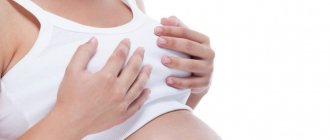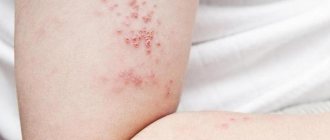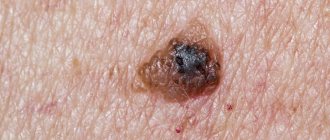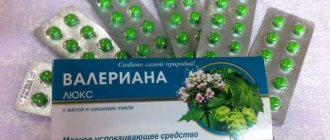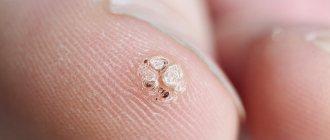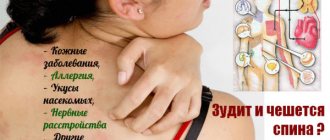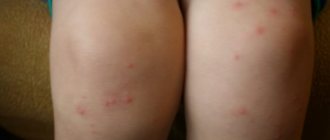If your fingertips itch
Often, any manifestations on your skin indicate the presence of some kind of disease. In order to make an accurate diagnosis, there is no need to delay visiting a doctor. If you feel that your fingers are itching, then you need to start looking for the cause, and then eliminate it. You cannot treat only external signs; you need to start with the internal organs - and this is the only way to get rid of such symptoms. The main reasons for itching on the fingers include:
- Allergic reaction. Allergic reactions include food allergies and cold allergies caused by an external irritant - frost.
- Dermatological pathologies. This is the main reason for such symptoms. When you see redness on your fingers, and also feel discomfort due to dryness and cracking of the skin, you should immediately go to see a doctor. You shouldn't hesitate to visit.
- Influence of external factors. This can be a temperature, mechanical, or chemical effect on the skin of the hands. For example, there are people who, when coming into contact with wool or synthetic materials, suffer from itching and redness of the skin. Others cannot come into contact with chemicals. This is especially true for people with sensitive and dry skin.
- Pathologies of internal organs. The body's systems are interconnected, which is why skin problems can be a sign of a disease of the lymphatic system, thyroid gland, gastrointestinal tract, liver, kidneys
- Psychological stress. Easily excitable, emotional people may exhibit symptoms that are caused by imaginary sensations.
- Medicines. Itching is often one of the side effects of any ointments and medications. Try to be careful when using various products, especially creams or ointments.
There are also cases when the pads of the fingers are swollen and itchy very much. The causes can be both external and internal. In fact, most internal health problems eventually begin to show up on the skin.
The internal causes of this pathology include:
- Changes in emotional state and prolonged nervous breakdown.
- Problems with the functioning of the digestive system. In this case, pimples often appear on the skin of the face and body.
- Vitamin deficiency and problems with immune defense. She is weakened, her body is vulnerable.
- Wrong lifestyle, lack of sleep.
- Burns from poisonous plants.
- Scabies mite.
- Taking certain medications.
- Injuries resulting in infection.
External factors of pathology are:
- The presence of dirt or dust in the apartment. It is very important to keep your home completely clean.
- Household chemicals and building mixtures.
- Sub-zero temperatures, severe frosts.
- Prolonged stay in water.
Diagnostics
If you experience pain in your arm, you should consult a doctor. Only he can establish its cause using laboratory tests and instrumental methods.
Symptoms of diseases
When trying to diagnose without the help of others, you should pay attention to the other symptoms that accompany the pain. These include:
- Signs ( in mathematics, logic - a sufficient condition for an object to belong to a certain class
) of intoxication - general malaise, fever, nausea - may indicate an infection. - Nausea, pain in other parts of the body ( a polysemantic word that can mean
) - for example, in the back, heart. This is a reason to suspect that the pain did not appear in the upper limb, but in the internal organs. - The presence of bruises, abrasions, scratches, swelling - traditionally such damage is observed during injuries.
The nature of pain (an unpleasant or painful sensation, the experience of physical or emotional suffering)
In almost all cases, the reason is indicated by the nature of the feelings.
Acute
This pain is appropriate for people who engage in strength sports and lift weights. It is also a sign of joint pathologies - arthritis, arthrosis, bursitis. Sharp pain in the right hand is stimulated by the separation of the spinal root, its damage, which occurs during a blow or other physical action. It can also be given away along the spine. With such an injury, the entire body is immobilized. Another cause is Personage-Turner syndrome, or amyotrophy, which affects the shoulder and forearm. This is also a sign that indicates mechanical damage, tears of tendons and ligaments.
Dumb
Dull pain in the arm is caused by osteoarthritis, most often it occurs during the daytime.
Aching
The hand may ache due to intervertebral hernia, due to myalgia (muscle pain), periarthrosis (inflammation of soft tissues and tendons in the joint). This is also a signal of injury ( damage, which is understood as a violation of the anatomical integrity or physiological functions of organs and tissues of the human body, resulting from external influence
), burdens associated with the profession, neurological diseases. The same symptom occurs with tunnel syndrome and glenohumeral periarthritis.
Unchangeable
Acquired pain is observed with tendonitis - inflammation of the tendons, bursitis - inflammation of the joint capsule.
My hand goes numb
If there is numbness on the left side, then the first reason ( Reason, excuse for some action. For example: Good reason; Laugh for no reason; Due to the fact that..., for the reason that..., due to the fact that
) - cardiovascular diseases. These include:
- angina pectoris, especially if a symptom ( one of the individual signs, a frequent manifestation of any disease, pathological condition or disruption of any vital process
) occurs during physical overload and goes away at rest; - myocardial infarction - often numbness is the only sign of damage to the heart muscle;
- sclerosis - symptoms intensify when the limb is raised upward;
- heart attack - if the right hand goes numb, then the left hemisphere is affected, and vice versa.
Attention! Acute cerebrovascular accident may also be accompanied by impaired speech, vision, and paralysis.
Hands also become numb with osteochondrosis of the thoracic or cervical spine. Numbness begins in the fingers and is accompanied by limb weakness and decreased strength. The pain syndrome spreads from the outside of the forearm and shoulder.
https://www.youtube.com/watch?v=A9FxeapW_44
Hands itch and swell
The reason that hands swell and itch, in most cases, is an allergic reaction, less often - diabetes. Also, the causes of swelling of the palm or the entire arm may be diseases of the internal organs, drinking a large amount of liquid before bed, but, as a rule, in these cases there is no itching.
Causes of swelling and itching in the hands
Are your hands swollen and itchy? Most likely, this condition was triggered by contact with an allergen. Also, in addition to the fact that the hands may become swollen and itchy, accompanying symptoms will be a change in the color of the skin (redness) and various rashes on the skin of the hands. In this case, there is a complete absence of any pain in the affected limbs.
The most common allergens that cause swelling and itching:
- Decorative cosmetics, hygiene products (cream, soap);
- Household chemicals (washing powder, cleaning product);
- Medicines;
- Food products (citrus fruits, seafood, eggs, honey);
- Animal wool;
- Pollen from various plants.
Analyze, perhaps the day before you tried some exotic fruit for the first time or applied a new cream. Maybe they didn’t take care of their hands while cleaning and used cleaning products without gloves. It is necessary to identify the allergen and completely stop contact with it.
An allergic reaction on the hands most often occurs in people prone to such reactions. Also, studies conducted by many scientists have proven that allergies are transmitted genetically. That is, if your parents suffered from this illness, it is highly likely that this will happen to you too.
- Determine the allergen that provoked this condition and eliminate it.
- Applying a cold compress will help make the affected area less itchy and reduce swelling.
- Apply topically or orally an antihistamine (Loratadine, Suprastin, Diazolin).
Diabetes mellitus disrupts all metabolic processes in the body. A malfunction of the endocrine system manifests itself in skin itching. The skin, as one of the human organs, also reacts to various negative processes in the body. Elasticity decreases, dryness, peeling, and slight swelling appear. The result of scratching the epidermis can be infectious, viral and fungal diseases.
Treatment for a condition in which the hands become swollen and itchy due to diabetes mellitus is to normalize blood sugar levels. Swelling and itching will go away as symptoms.
Various kidney diseases of inflammatory and non-inflammatory etiology lead to swelling of the extremities.
Heart disease also causes swelling. Associated symptoms, in addition to swelling of the palms, are increased blood pressure, general weakness, and shortness of breath.
Liver diseases, malfunction of the endocrine system, poor circulation, all these pathological processes in the body can cause local and general edema. In almost 100% of cases, itching is not a symptom of these diseases. But only a specialist can accurately diagnose and prescribe the correct treatment.
The main diseases characterized by swelling of the hands are:
- Arthritis;
- Osteoarthritis;
- Gout;
- Tunnel (carpal) syndrome;
- Inflammation of ligaments and tendons (peritendinitis).
The symptoms of all of the above diseases are quite similar: swollen hands, significant pain, local increase in temperature, redness of the skin, sometimes a slight tingling sensation is possible, and even less often - a condition in which the hands itch.
You can take an anesthetic and anti-inflammatory drug (Diclofenac, Nimesil, Ibuprofen) on your own, this will relieve the primary painful symptoms. For further treatment, consult your doctor.
Still, the main reason why hands swell and itch is an allergic reaction. By eliminating the allergen and taking an antihistamine, improvement should occur within 24 hours. In case of the opposite situation, when the manifestation of symptoms intensifies, immediately seek qualified medical help.
Itching and swelling of the hands are a sign of changes in the body, fortunately not always pathological. If swelling of your hands constantly bothers you, then read about the causes and treatment of this unpleasant symptom. If itching and swelling of the hands occurs after training or physically hard work, this is normal. This will be considered normal if both hands swell.
If itching and swelling of the hands occurs, this may be an external signal of an internal problem. For example, renal edema. With renal edema, not only the hands swell, but also the eyelids, face, abdomen, and legs. The patient, as a rule, knows that he has problems with the kidneys and for him swelling will not be a “discovery”, but will be a reason for a visit to the nephrologist.
Why does the whole body become swollen when you have kidney disease? It's simple! The urinary system cannot cope with the outflow of fluid from the body. It turns out that excess fluid is removed with a delay, which creates puffiness in patients.
The most obvious cause of itching and swelling of the hands is an allergic reaction of the body to the penetration of an allergen. Anything can become an allergen, it depends on the individual sensitivity of the body.
– Animal wool; - Household chemicals; – Make-up products, eau de toilette; – Chocolate, honey, citrus fruits, egg white; - Medications; – Pollen from flowering plants.
The patient also already knows about the presence of an allergy to a specific “aggressor”. After deliberately taking or accidentally ingesting an allergen into the bloodstream, your hands become swollen and itchy, you should take one of the antihistamines.
- Tavegil;
- Suprastin;
- Diazolin;
- Pipalfen;
- Zodak or Zyrtec;
- Fenistil
After taking the drug, the swelling will subside and your hands will stop itching. It will be helpful to apply an ice pack wrapped in a thin towel to the scratching area. This technique will help quickly eliminate swelling and soothe the skin.
Remember, perhaps, before the development of swelling in your hands, you cleaned using household chemicals without gloves, or tried a product that was new to you. After analysis, remove this product/name of household chemicals from yourself.
If swelling occurs with an undetected allergen, it is important to visit an allergy center to identify it. The sooner you understand what specifically provokes itching and swelling, the sooner you can protect yourself from getting it inside.
Causes of numbness in fingers
In the photo there is a reminder of the circumstances and signs on the fingers if the fingers are numb.
Among the circumstances that cause numbness of the left hand and individual fingers of the left hand, we can highlight the safest ones, which do not require the help of a doctor or special treatment:
- Uncomfortable sleep. If, upon waking up at night or in the morning, you suddenly feel numbness in your hand, tingling and goosebumps, then most likely there is no reason to worry. With an awkward position during sleep, the functioning of blood vessels is disrupted and unpleasant feelings appear in the limbs. If at the same time your beloved person was sleeping on your arm or shoulder, then the cause of numbness is trivial; this phenomenon is also called “the syndrome ( a set of symptoms with a common etiology and pathogenesis
) of lovers.” Due to the compression of blood vessels, the hand becomes numb, but this soon goes away when the position of the hand changes. Try to do exercises - and after 5-10 minutes the feeling of numbness will disappear. If it doesn't happen again, then you don't have to worry about anything. But if the numbness of the hand is permanent, you should still consult a doctor to determine the cause of the loss of sensitivity. Perhaps the given symptom of numbness is caused by osteochondrosis of the thoracic spine, osteochondrosis of the lumbar spine or polyneuropathy - here we carefully analyzed what it is and how to cure it.
An awkward position in sleep is one of the reasons for numbness of the limbs. If you sleep on your side, on your arm along your body, or on your arm under your head, numbness will be natural and natural – you should not worry about this option.
- Monotonous work. Often this symptom manifests itself in office workers. This phenomenon is also called “tunnel syndrome” or “pianist syndrome”. At times it manifests itself in people of different professions that require constant tension in the hands. If the withdrawn feeling does not occur often and is not accompanied by severe pain, experts advise reducing the overload on the wrists and remembering to frequently do exercises for the joints.
- Awkward clothes. Elastic bands, cuffs, and tight sleeves can pinch blood vessels and cause a nasty feeling. Make sure that your clothes are not only beautiful, but also comfortable for you and pleasant to your body.
- Hypothermia. Prolonged exposure to cold can cause narrowing of the arteries, followed by numbness of the limbs ( paired appendages of the body in animals, separated from the body or head and usually driven by muscular force (less often, hydraulically, by pumping fluid))
. If this feeling arises, it is better to quickly head to a warm place - soon everything should pass. You should not immerse your hands in hot water to warm up. - Needlework. Hands may become numb due to long, monotonous execution of identical movements by them, or from overexertion. If you are doing handicrafts, give your hands a rest every 30-40 minutes - knead and rub them for a couple of minutes.
- Carrying a heavy backpack or bag. If you do this often on the same shoulder, numbness will not be long in coming. Due to the heavy burden, nerves can be pinched, the spine bent and blood vessels pinched. Try carrying the bag alternately on different shoulders, or better yet, carry it in your hand. However, it does not have to be extremely heavy.
- Physical overload. Long hours of work that cause muscle strain can cause numbness in the hands. Don’t forget to alternate between work and rest.
- Keep your hands above the heart stripe for a long time. Be sure to take regular breaks if you are doing work that requires such a hand position.
- Carpal tunnel syndrome
is a symptom complex caused by compression of the median nerve in the carpal tunnel.
It is diagnosed more often in ladies than in guys. Tunnel syndrome or carpal tunnel syndrome is a neuralgic disease. Included in the group of tunnel neuropathies. It manifests itself as prolonged pain and numbness of the fingers. The most common reason for the occurrence ( this is a statement intended to substantiate or explain some argument
) is long-term compression of the median nerve between the bones and tendons of the wrist.
In the photo: What to do with carpal tunnel syndrome in the hand and wrist - exercises for prevention and tips on the correct position of hands at the computer, special keyboards, mice and bandages.
In all these situations, hand numbness occurs from time to time, and ordinary massage, rubbing or gymnastics can help eliminate this condition. Traditionally, after 10-30 minutes, the numbness goes away without a trace.
If your left hand goes numb, the problem may lie in the spine, getting worse every day. The photo shows a comparison of the cervical vertebrae and the nerve endings on the fingers.
If the cause of the symptom of numbness in the fingers of the left hand is illness, it is important to listen to your own body and accompanying feelings. If hand numbness lasts more than 1 hour, and there is pain in the area of the heart, difficulty breathing and numbness in the fingers, do not delay calling an ambulance, because these may be signs of cardiac pathology.
Itching and swelling in the hands due to heart disease
A known cause of itching and swelling of the hands is diseases of the cardiovascular system. But what kind of pathology, here is the list: – Myocardial dysfunction and cardiovascular failure; – Vein thrombosis of the upper extremities; – Pre-stroke condition; – Stenosis (narrowing) of blood vessels; – Decreased cardiac output;
– Cardiomyopathies; – Cardiosclerosis; – Amyloidosis; – Rheumatic heart disease; - Congenital heart defect; – Arrhythmia; – Pericarditis In addition to swelling of the hands, these conditions are accompanied by shortness of breath, bluish skin on the face, development of “clock-like” fingers, dizziness, pain in the heart and intercostal space.
– Cardiologists; – Arrhythmologists; – Cardiac surgeons; – Interventional surgeons;
When spraining ligaments and tendons, there will be no itching!
You can take it yourself: – Ibuprofen; – Diclofenac; – Ketanov; - Nise.
Do not exceed the maximum dosage of medications, no matter how much your hand hurts. Strengthen the effect by applying herbal compresses and rub the painful area with anti-inflammatory gel.
The last possible cause of swelling and itching of the hands is incorrect positioning of the upper limbs during night rest. This occurs due to sound sleep, when a person does not control the position of his body, the veins are compressed and the outflow of venous blood is hampered. In this case, the person does not require treatment.
Most people have experienced swollen palms that itch periodically. Unpleasant feelings last from a few minutes to several days. You should not ignore the body’s reaction - what happens to the limbs is a reflection of ongoing processes in the body.
There is no need to panic or worry if your hands are swollen and itchy. Sometimes the causes of discomfort are minor and easily removable. Their timely identification will help to avoid complications.
The disease occurs when the median nerve, which passes through the carpal tunnel, is compressed. Patients report numbness, swelling, pain and itching of the wrists. Carpal tunnel syndrome occurs at any age in both sexes. It is typical for people with monotonous work. Treatment at an early stage allows you to completely eliminate the disease and its symptoms.
At home, swelling and itching of the hands are relieved using the following methods:
- cooling the wrist with ice cubes and taking five-minute breaks every hour during monotonous work;
- gymnastics to strengthen the hand and spare channel;
- massage: rub lotion into the palm with gentle movements.
If the pain does not go away, you should consult a doctor.
Hands and feet may become swollen and itchy when eating large amounts of salty or fried foods. Swelling extends from the base of the fingers to the tip. The body must maintain a certain water-salt balance, so it retains water in the limbs.
This is a common case in medical practice. With a slight excess of salt in the body, the hands swell and itch throughout the day. Doctors recommend eliminating salt from your diet for a week and observing the body’s reaction.
Often your hands may become swollen after walking. The cause is changes in weather, temperature fluctuations and imbalances in electrolytes. Electrolytes are important minerals for the body.
To prevent swelling of the limbs, their ratio with water in the body must be normal. Sweating causes electrolytes to leave the body, causing an imbalance.
If you are planning a long walk, then you should not put pressure on your fingers and hands: rings, gloves, watches, things with tight cuffs.
While walking, your hands should periodically squeeze something and do gymnastics (raise your arms up, make extended movements with straight arms, clench your fist, imitate playing the piano, etc.).
Before your walk, drink water to maintain a normal level of water-salt balance. Body weight after a walk should remain the same as before going out.
Your hands become swollen and itchy in the summer. The seasonal phenomenon is caused by heat, which causes the blood vessels to dilate. Thus, the body tries to cool the body. With swelling, fluid from the blood vessels passes into the tissues.
Seasonal swelling should go away on its own. If you experience pain in the swollen area, you should consult your doctor.
Lymphedema is characterized by local fluid retention and tissue swelling. It is caused by a malfunction of the lymphatic system. During normal operation, interstitial fluid returns to the lymphatic stream and then to the circulatory system.
Your hands and feet may swell. The skin on them will be stretched and thick. Lymphedema can be caused by surgery or lymphoma.
Symptoms of the disease will go away on their own, but treatment should be started so that the disease does not become chronic.
Lymphedema is treated as follows:
- rest: palms should rest in an elevated position to prevent fluid accumulation and reduce stress on the lymphatic system;
- compressor bandage: the arm will not swell further and stronger;
- physiotherapy: localized massage and gymnastics to facilitate the outflow of fluid.
The phalangeal joints swell and itch with osteoarthritis. The cartilage tissue is damaged, and “spikes” begin to grow on the joints. The process is accompanied by swelling, itching, and pain when moving. Inflammations cannot be treated.
For osteoarthritis, early diagnosis is important - x-ray examination. For severe pain or itching, painkillers, acupuncture and physical therapy are prescribed.
Swelling occurs when the brain region responsible for vascular tone does not function properly. Their narrowing is observed when the ambient temperature drops or under stress. Swelling and itching appears in one finger, and then gradually spreads to the entire limb.
Additional symptoms include a feeling of cold and tingling of the hands.
Treatment of edema due to Raynaud's disease occurs using the following methods:
- avoiding sudden changes in temperature: wear warm clothes, wear mittens;
- do not come into contact with chemicals that affect blood vessels: caffeine, nicotine, etc.;
- eliminate stress during monotonous work;
- gymnastics;
- reducing stress through psychological counseling.
Allergic edema is caused by a change in vascular permeability - the immune system's response to a foreign substance. It often causes itchy hands and feet. This is a serious disease that requires proper treatment.
The main symptom is swelling and itching. The first contact with the allergen causes minor itching and the hand will swell slightly. However, repeated contact can be life-threatening.
The most severe form of allergy is Quincke's edema. It is accompanied by gradual swelling of the mucous membranes, which interferes with breathing.
Dyshidrosis is a skin disease of the hands. Associated with allergies and disruption of the autonomic nervous system. It is accompanied by a rash of transparent blisters on the skin of the hands and between the fingers. Patients are concerned about itching, pain and severe swelling.
If your hand is swollen and itchy, you should consult a specialist and identify the true cause of fluid retention. Swelling and itching can be symptoms of many diseases that become chronic. Timely diagnosis and treatment will help avoid repeated swelling and itching of the extremities.
Many people complain of swelling of the hands and itching in the arms. Sometimes the hands of the left hand swell more than the right. The reasons for this phenomenon may be different. Even experts are not immediately able to determine why the hands swell. As a result, you have to undergo a large-scale examination, the results of which will help confirm or refute the presence of a particular disease.
Some people experience severe pain in the joints of their hands due to swelling. You have to try to relieve the swelling at home. But in order to effectively combat the disease, it is necessary to find the cause and factors that influence swelling of the hands.
The causes and factors of swelling can be:
- diseases of internal organs;
- mechanical interventions, bruises and injuries;
- changes in blood composition;
- nervous shocks;
- allergies;
- decreased protein levels in the body;
- pregnancy.
The main and most compelling reason for swelling of the hands is diseases of the internal organs. Most often, edema is associated with kidney disease, since these organs are responsible for the balance of water in the body. And if they don't work well, it can lead to excess fluid. As a result, the person discovers that his hand is swollen. In some cases, itching of the hands may occur.
Cardiovascular diseases can also affect your hands. In diseases of the heart and blood vessels, blood circulation is impaired, which leads to stagnation. The plasma has to leave the walls of the blood vessels, resulting in swelling of the hands.
Another important factor is mechanical intervention. In this situation, the exit of venous blood from the tissues is blocked. When pressure is applied to the veins located above, they narrow. As a result, the arteries that must deliver blood to the tissues are located very deep. The result is that blood cannot leave the tissues and begins to accumulate between the fibers and cells.
Changes in blood composition can also lead to swelling of the hands. Limbs may swell when the walls of blood vessels are damaged, as blood begins to flow beyond the walls of the capillaries. The hands also swell due to nervous shock or diseases of the nervous system. The cause of edema is paralysis, which occurs as a result of damage to the brain, both the brain and the spinal cord. Often such edema is called paralytic.
Swelling caused by allergies also causes itching of the hands. Allergic reactions can be triggered by various factors: from chemical irritants to insect bites. But itching and swelling can be easily relieved by eliminating the cause of the allergy using antihistamines. A sharp decrease in protein leads to the fact that blood vessels lose their ability to retain fluid in the body, which is why edema occurs.
Possible causes of pain, its nature and accompanying symptoms
Painful sensations in the hand ( human upper limb, musculoskeletal system, one of the most important parts of the body
) from the shoulder to the elbow may indicate physical fatigue, injury, or the manifestation of symptoms of a severe illness.
Mechanical damage (injury)
Injury occurs from mechanical damage to the bone, joint or skin, as well as from burns or chemical action.
In this variant, the painful feelings are of an intense nature, which can be aching, dull or throbbing.
Additionally, subcutaneous hematomas may indicate injuries. If the integrity of the bone is compromised, it will be noticeable due to the visual configuration of the shoulder joint. The most difficult to diagnose are bruises and minor injuries to the shoulder.
Capsulitis
A severe disease in which the specific membrane of the joint is damaged and the mobility of the affected area is sharply reduced.
When the pathology is given, the following painful feelings are highlighted:
- pain in the shoulder area, as well as irradiation of unpleasant feelings towards the shoulder blade (symptoms intensify with the development of pathology);
- there is always a feeling of stiffness in the shoulder girdle;
- Over time and the development of pathology, a gradual decrease in mobility is observed.
The disease progresses quite rapidly, which is why the joint can become completely immobile over the course of a couple of months or years.
Tendinitis
Tendinitis is accompanied by inflammation of the tendon, often affecting the elbow rather than the shoulder joint. The pain itself extends across the entire surface of the arm from the elbow joint to the shoulder.
For a similar illness, the following symptoms are corresponding:
- pain during mobility, as well as palpation of the affected area;
- swelling or redness of the skin occurs in the affected areas;
- a crunch in the joint often occurs when moving;
- a small tumor in the area where the joint is affected.
Despite the severity of the disease, as it progresses there is no decrease in the functionality of the limbs.
Similar symptoms are associated with periarthritis, as well as other joint diseases, which is why differentiated diagnostics are carried out.
Diseases of the spinal column
Often the cause of painful feelings in the shoulder are pathologies of the spine, which are accompanied by degenerative destruction of the discs.
Powerful pain in the arm from the shoulder to the elbow appears when moving, and has a pulling or aching character.
This symptom is complemented by unpleasant feelings in the area of the spine itself, where degenerative changes in the discs or pinched nerve roots occur. Painful feelings can radiate to any part of the body, depending on the damaged area, but the mobility of all limbs is preserved.
Neurological diseases
Hypothermia or a pinched nerve may be the cause of unpleasant feelings in the upper arm. In such variants ( one of several editions of a work (literary, musical, etc.) or an official document; modification of any part of the work (different readings of individual
) the pain is accompanied by fever and does not go away even at rest.
As in the case of diseases of the spine, there is a corresponding aching or nagging pain, but the mobility of the joint is not impaired. With sudden movements, a shooting pain sensation may be observed, which quickly subsides.
The unpleasant symptoms remain even at rest.
Pathologies (“” (from Greek) hearts
Quite often the pain moves to the shoulder during a heart attack. Preparatoryly, it appears in the chest, but then smoothly moves to the left hand, and also hits the back between the shovels.
Heart diseases, as a rule, appear with powerful compressive pain in the chest, which, as the attack progresses, first moves to the shoulder joint, and then to the entire left arm. The corresponding feature of an attack is its manifestation during physical overload. Painful feelings go away after taking nitroglycerin or another antispasmodic.
The people were taken aback! Joints will recover in 3 days! Attach...
Few people know, but this is exactly what heals joints in 7 days!
Bursitis
The pathology is characterized by inflammation of the periarticular bursa, which is filled with synovial fluid, which does not allow the bones to come into direct contact with each other.
When the disease is given, the following symptoms stand out:
- corresponding pain, often of a pulling, painful nature;
- formation of a tumor around the damaged area;
- increase in body temperature up to 40 degrees.
If there is an elevated body temperature, transportation to a clinic is recommended.
Myositis
Myositis ( general name for diseases characterized as inflammatory lesions of skeletal muscles of various origins, various symptoms and course of the disease
) - a disease caused by the structural configuration of muscle tissue due to the action of infections, hypothermia or excessive overload. Myositis can also be caused by the presence of parasites in the body.
The only symptom of the pathology is a corresponding pain in the arm from the shoulder to the elbow of an aching or pulling nature.
Other symptoms may appear at a late stage of the disease in the form of a slight increase in temperature, which is why the person does not immediately realize the seriousness of the disease.
Arthritis, arthrosis
Arthritis of the elbow or shoulder occurs due to hypothermia, extreme physical overload, as well as damage to the articular membrane, muscles and tendons. The disease can be recognized by the following symptoms:
- painful feelings intensify in the morning and evening;
- there is a constant feeling of stiffness in the unhealthy shoulder;
- there is redness and corresponding swelling of the joint.
Arthrosis has related symptoms. Only a specialist can identify the real reason.
Humeroscapular periarthritis
This pathology in the human body proceeds secretly; in the early stages it actually cannot be detected. Then the disease manifests itself with the following symptoms:
- powerful debilitating form of pain in acute pathology;
- muscle tissue atrophies evenly in the affected area;
- incremental deposition of potassium salts is observed;
- bone osteoporosis develops over time;
- the hand of the warped limb has a blue tint.
In the acute form of the pathology, treatment should begin immediately so that the functions of the damaged area are not lost forever.
Osteoporosis
At the initial stage, this disease does not manifest itself in any way, which greatly complicates its diagnosis. Developing osteoporosis is characterized by the following symptoms:
corresponding mild pain from elbow to shoulder;
- brittle nails and teeth;
- the affected area often becomes numb;
- physical activity decreases, rapid fatigue is observed;
- movement of the damaged area of the body is limited.
For people with osteoporosis, a fairly rapid weight loss is typical.
Gout
A nasty disease in which lumps form on the joints. Most often, the body is affected, starting from the lower extremities, gradually moving upward.
The disease is accompanied by powerful excruciating pain. Nasty feelings in the area of the warped limb do not subside even at rest. Often the disease is accompanied by an increase in body temperature.
Other diseases
Listed above are the main prerequisites that contribute to the development of painful feelings in the shoulder joint. Along with this, the problem may lie in such diseases ( this is a condition of the body expressed in the disruption of its normal functioning, life expectancy and its ability to maintain its homeostasis
), as styloiditis (inflammation (
this is a complex, local and general pathological process that occurs in response to damage (alteratio) or the action of a pathogenic irritant and manifests itself in reactions aimed at eliminating
) tendons), epicondylitis (damage to the junction of muscle and bone tissue) .
Regardless of the nature of the pain in the arm from the shoulder to the elbow, it is recommended to immediately consult a doctor to eliminate the risk of the appearance or further progression of a severe pathology.
Hands itch and red spots appear
If large or small rashes in the form of redness or itching appear on your hands, you should rush to seek medical help. After all, this phenomenon can be associated with a considerable number of factors. Fingers and palms often itch and swell for the following reasons.
- Allergies to household chemicals, cosmetics, certain medications, clothing, food.
- Manifestation of infection, for example, lichen or fungus. They begin to progress when immunity is reduced.
- Temperature fluctuations. Especially in cold weather, redness may appear on the hands.
- Problems with the psycho-emotional state: lack of sleep, excessive stress, chronic fatigue, stressful situations.
- Wrong diet. Problems with nutrition are always fraught with some unpleasant consequences, this case is no exception. That is why you need to closely monitor your diet. It is better for a nutritionist to develop an individual menu. It will help you normalize your body's functioning and eliminate unpleasant symptoms.
The essence of pathology
Numbness of the hands is not a diagnosis; there is no such nosology in ICD-10, but it is a frequently occurring symptom of extremely complex impending or already occurring pathologies or syndromes. These disorders and lesions can be associated with professional activities or diseases of internal organs. When they talk about an occupational disease, they mean those representatives of professions who, due to the nature of their activities, must make repeated small and identical movements of insignificant amplitude during their working day; or they must remain in a monotonous, motionless and uncomfortable position for a long time; or, on the contrary, experience enormous physical overload. These include drivers, watchmakers, pianists, violinists, jewelers, painters, writers, seamstresses, knitters, sign language interpreters, typists, accountants, computer specialists, construction workers, and loaders.
Numbness may affect only the fingertips, occur in a specific area of the arm, or appear all the way from the shoulder to the fingers. With this phenomenon, not only sensitivity disappears, but also the mobility of the hand. The reasons for which numbness occurs are divided into physiological and pathological. In the first option, the symptoms are transient, they disappear after warming up, massage, shaking hands, etc. But if they become permanent, do not go away for a long time, or are accompanied by other signs of the disease, then a doctor’s consultation is required. Numbness may be accompanied by pain or be without it - most often this happens with damage to nerve fibers, blood vessels, etc. The occurrence of paresthesia does not depend on the time of day, seasons, or country of residence.
The location of paresthesia on the arm can be in the shoulder and surrounding tissues, in the area of the elbow joint, wrist and fingers. With vascular disorders, in addition to numbness, there may be redness, and then darkening of the skin, its peeling - without treatment, you can, in very advanced cases, lose your hand altogether.
Physiological prerequisites - connected with awkward posture, bad habits, incorrect lifestyle and do not depend on the disease, are not connected with them. These include:
- 1. Posture in sleep, incorrect upper pillow, habit of throwing your arms behind your head, squeezing your hand with an elastic band from your underwear.
- 2. Frequent and incorrect lifting and carrying of heavy objects, bags or suitcases.
- 3. Work that requires a vertical position of the hands for a long time: painters, wallpaper pasters, climbers, rock climbers.
- 4. Hypothermia of the hands; menopause
- 5. Pregnancy - in half of the cases it is accompanied by numbness of the hands, especially in the 2nd and 3rd trimester. This phenomenon is justified by the fact that during pregnancy the swelling of almost all tissues increases, the swelling compresses the nerve endings, and a sensitivity disorder occurs. At the same time, unpleasant feelings intensify at night, and completely disappear during the day.
Pathological preconditions constantly reflect the presence of some disease: pathologies of the spine, internal organs, endocrinopathies, fractures and injuries of the arm, head injury, systemic diseases, etc.
Symptoms of an allergic reaction
Allergic reactions can present with a variety of symptoms. If your hands become swollen and red after contact with an irritant, the likely cause is a contact allergy. It can be provoked by:
- household chemicals;
- cosmetical tools;
- fabric dyes;
- animal saliva;
- essential oils.
It is important to be able to distinguish contact dermatitis from an allergic reaction. Dermatitis is an inflammation of the skin that develops due to irritation of the neurotransmitter acetylcholine. An allergic reaction is an immunopathological process associated with the production of histamine and its accumulation in mast cells. With each subsequent exposure to an allergen, more of this substance is produced, leading to worsening symptoms.
Dermatitis and allergies are treated differently. For dermatitis, moisturizers and soothing agents, as well as anti-inflammatory ointments, are used. In case of an allergic reaction, you must first interrupt contact with the irritant, and then stop the production of histamine using special tablets or ointments.
Allergies on the hands are treated with antihistamine ointments, such as Fenistil gel. For severe forms of inflammation, corticosteroids are prescribed for external use. Additionally, you should take tablets that reduce the production of histamine in the body.
When an allergen enters the body, the immune system tries to destroy it by producing certain antibodies. The appearance of allergies between the fingers is a reaction of the body to various irritants. The worst case scenario is when the watery blisters that appear on the fingers begin to burst. The most common reasons why fingers are swollen and itchy are:
- Too close contact with household chemicals and cleaning agents. As mentioned above, try to use only proven and high-quality household chemicals.
- There are also cases when people have a genetic predisposition of the body, as well as allergic reactions to certain weather conditions. Unfortunately, it is unlikely that anything can be done about a genetic predisposition, so it is necessary to begin high-quality symptomatic treatment of the problem that has arisen as quickly as possible.
- A stressful situation, contact with liquid, soil, or excessive sweating can affect the appearance of allergic rashes. Try to minimize these factors.
Acne on the arms from shoulder to elbow, their differences, symptoms and treatment
The appearance of pathological rashes on various parts of the body is not uncommon. When acne appears on the face, it causes a lot of inconvenience and discomfort.
But if they appear in other parts of the body, most people try not to notice the inflammatory elements, letting the treatment take its course.
Pimples that appear on the arms from the shoulder to the elbow are the same indicators of internal disorders of the body as other pathological rashes.
Why do acne appear in the shoulder area?
Before starting to use specialized products, you need to determine the etiology of acne in these areas.
Know! The attitude towards the formation of pathological elements in the shoulder area should not remain indifferent.
The main causes of rashes and acne on the hands come down to the following factors:
- allergic manifestations;
- violation of metabolic processes;
- diseases of fungal or infectious origin;
- hereditary predisposition;
- stressful situations;
- hormonal changes in the body.
The appearance of acne with an allergic etiology occurs against the background of long-term use of sulfonamide drugs and antibiotics. If elements appear first on the hands, and then on the forearms and shoulders, it is worth thinking about the disruption of metabolic processes in the body.
If watery pimples appear on your hands, that is, papules with watery contents, this indicates the development of infectious diseases. These may be manifestations of rubella, measles or chickenpox. All acne that appears as a result of these diseases have a specific appearance, however, in appearance they are quite similar. Only a doctor can differentiate the elements.
Changes in hormonal levels that occur in women during pregnancy, breastfeeding and adolescence can also be etiological factors in the appearance of acne. The fact is that high levels of steroid hormones in the body enhance the functioning of the sebaceous glands and the production of their contents.
Important! Squeezing pimples on your hands is prohibited. This can lead to the spread of infection to healthy tissue.
How and with what to treat?
There is absolutely no doubt that acne needs to be treated. But how to do that?
- In the case of allergic etiology, contact with the factor that caused the rash must be stopped. Antihistamines are prescribed - Suprastin, Diazolin, Loratadine, Tavegil. Baths or lotions with herbal decoctions are applied locally. These can be string, chamomile, clover, wild rosemary, oak bark.
- If rashes appear against the background of folliculitis, local treatment of the skin with antiseptic agents is prescribed. If the disease is chronic, then tetracycline antibiotics, macrolides, and cephalosporins are prescribed.
- Vitamin preparations are prescribed if acne is the result of hypo- or avitaminosis. Vitamins B and A, nicotinamide, ascorbic acid, and vitamin D are often used.
- Against the background of dysbiosis, drugs are used that restore the intestinal microflora - “Laktiale”, “Linex”.
Know! Self-medication leads to negative consequences. The use of medications must be under the supervision of a physician.
Folk recipes
Body masks based on white or blue clay will help dry out rashes. A small amount of water is added to clay powder purchased at a pharmacy or beauty supply store until it reaches a creamy consistency.
The mass is not applied to the entire surface of the shoulders, but only to those areas that are covered with rashes. After the mask dries, it should be washed off with warm water. Then the skin is treated with some decoction of medicinal herbs.
A bath with the addition of potassium permanganate will help reduce the feeling of dryness and itching.
A similar bath is made for infants in order to disinfect the water and disinfect the skin from transient pathological microorganisms.
Several crystals of potassium permanganate are diluted in ½ glass of warm water. Then the resulting solution is poured into a container for the bath and several liters of water are added.
Oral preparations
To treat acne on the body, not only local therapy is effective, but also taking infusions and decoctions of medicinal herbs orally. Nettle has an immunostimulating and anti-inflammatory effect. Its infusion is taken half a glass before each meal.
Dandelion decoction helps to cope with the addition of bacterial microflora. In this case, purulent contents appear in the pimples. The root of this plant is crushed, a tablespoon is poured into a glass of water and boiled. The resulting broth is filtered and taken 3 times a day, one-third of a glass.
A decoction of burdock roots is also considered an effective remedy. Preparation and administration are the same as in the case of dandelion decoction. But they take it not 3, but 4 times a day, regardless of meals.
Preventive actions
Like all rashes, shoulder acne can be prevented. To do this, you need to follow certain recommendations.
- Normalization of the diet includes limiting marinades, spices and alcohol, sweets and flour. Increase the amount of fruits and vegetables, fish and meat dishes. Preference is given to boiling, stewing, and steaming. Increase foods rich in vitamin D in your diet.
- Clothes are selected from natural fabrics. Synthetic fabrics do not allow air to pass through, causing the skin to sweat excessively and increasing the growth of bacteria. Attention is also paid to strengthening the immune system and improving the functioning of the digestive system.
Traditional treatment for red palms
The effects of traditional medicine recipes should not be underestimated; this is an integral part of complex therapy. Traditional medicine can help eliminate symptoms and alleviate the patient's condition.
Baths from a series
The string is a unique herbal component that helps in the treatment of various dermatological diseases. To prepare the composition, take 2 liters of water and 50 g of dried string. The mixture is kept on medium heat for 25 minutes, then covered with a lid and left for 30 minutes. The mixture is filtered and cooled to a comfortable temperature.
Palms are immersed in water and kept for 20-30 minutes. Palm baths are done daily in the evening. The course of treatment lasts 10-15 days. The method significantly reduces the feeling of itching, eliminates peeling and prevents the development of infection inside the papules.
Aloe and honey compresses
The application of bandages on the palms is associated with the effect of plant components on the skin of the hands. For adults, this method does not cause difficulties, but for children it can be difficult to hold the compress on their palms for a long time.
Compresses are made from aloe and honey. To do this, take several medium aloe leaves, chop them into small pieces, squeeze out the juice and put them aside. The resulting mixture is mixed with liquid honey until smooth. The composition is distributed over thin gauze and fixed on the damaged areas of the palms until the mass dries completely.
Aloe with honey affects the skin as an anti-inflammatory agent; it can improve local blood circulation and relieve swelling. Treatment with honey compresses must be accompanied by drug therapy prescribed by specialists.
Rash on the wrists: photos, possible diseases, treatment
A rash on the wrists appears quite often. This area has the thinnest and most delicate skin, which reacts sharply to any impact. In most cases, the problem is contact dermatitis. The skin is irritated by watch straps, bracelets, and chafing from sleeves and cuffs. Sometimes the problem may be cosmetics, soap or household chemicals.
In such cases, getting rid of the problem is quite simple. You need to take an antihistamine and anoint the affected area with an ointment with a cooling and soothing effect. During treatment, contact with water and rubbing parts of clothing should be avoided. It is also necessary to find out what exactly caused such a reaction and stop using it.
In some cases, the cause of rashes is stress. Due to psychological stress, the conduction of nerve impulses is disrupted. So-called nervous prurigo occurs. The delicate and vulnerable skin of the wrist is easily damaged and covered with a rash. To eliminate the problem, you should drink a sedative and treat the combed areas with regenerating and antipruritic ointment.
Sometimes the cause of the problem is pathology. The most alarming cases are when the rash on the wrists does not itch.
Rash on wrists photo
An allergic skin disease that occurs due to hereditary predisposition. Psychological stress, tobacco smoke, and various chemicals can provoke an exacerbation. Mainly found in children and adolescents. The rashes are also localized on the face, armpits and groin, behind the ears, behind the knees and in the elbow. There is itching.
The pathology is characterized by alternating periods of remission and relapse. At the initial stage, it may manifest itself in the form of peeling between the fingers. In advanced cases, the skin on the palms may peel off. Treatment involves taking vitamins, immunomodulators and antihistamines. External treatment of lesions is also used.
According to indications, hormonal drugs and antibiotics are used.
Acrodermatitis
Rashes on the wrists can be caused by acrodermatitis. It is an inflammatory skin disease caused by a tick bite, metabolic disturbances, or weakened nerve impulses.
The causes of occurrence affect the clinical picture and method of treatment. Most often, the pathology is characterized by the appearance of ulcers and blisters with serous contents. The rash covers the wrist and hand. The tissues swell, pain, burning and itching are felt.
Basically, antibiotics and a number of other drugs according to indications are used for treatment.
Lichen planus
A disease that causes metabolic and immune disorders. The causes of the pathology are unclear. Provoking factors are genetic predisposition, diseases of the gastrointestinal tract, and a tendency to allergies. The result of the disease is a rash on the wrist, knees, elbows, and oral mucosa.
Over time, the lesions grow and occupy large areas of the body surface. The main inflammatory elements are burgundy or red-violet growths. On large nodules, a grid-like pattern is visible. New growths merge, grow and become like garlands, circles or straight lines. The process is accompanied by itching.
Treatment uses ultraviolet irradiation, hormonal ointments and sedatives.
